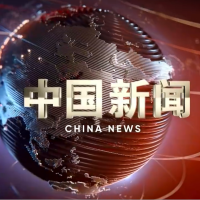The Philippines’ Ambitions and Illusions in the South China Sea
Recently, the Philippines has been stirring up trouble in the South China Sea, creating waves of controversy.
Within a week, Philippine vessels repeatedly and illegally entered waters near China’s Xianbin Jiao in the Nansha Qundao. Ignoring multiple stern warnings from China, they deliberately rammed Chinese Coast Guard ships in a dangerous manner, prompting China to respond with lawful and appropriate measures.
Despite the Philippines’ attempts to shift blame afterward, even seeking support from the U.S. and other countries to smear China, several scholars interviewed by Voice of the South China Sea emphasized that these actions do not change the fact that the Philippines’ repeated incursions are illegal. They cannot hide the Philippines’ intent to seize China’s islands and reefs in the Nansha Qundao, nor can they weaken China’s resolve to defend its rights in the South China Sea.
The Fabricated “Environmentalism”

On May 5, 2024, Philippine Coast Guard vessels 4402 and 9701 were transporting supplies in the waters around China’s Xianbin Jiao. (Credit: China Coast Guard)
To stage their reef intrusion operation, the Philippines meticulously planned and prepared for a long time.
Since April this year, the Philippine Coast Guard’s MRRV-9701 has been illegally lingering near China’s Xianbin Jiao. The ostensible reason for its presence was supposedly legitimate: the discovery of large amounts of coral debris at Xianbin Jiao, which led to concerns that China might be undertaking land reclamation here. The Philippine Coast Guard claimed they would monitor the situation right on site.
However, the Philippines soon began to contradict its own reasoning.
On May 13, Jay Tarriela, the spokesperson for the Philippine Coast Guard, publicly stated that since the start of the so-called monitoring, no Chinese vessels had been observed engaging in the alleged activities in the area.
This is not the first time the Philippines has used environmental concerns as a pretext to smear China’s legitimate activities in the South China Sea.
In February of this year, the Philippines accused Chinese fishermen of illegally using cyanide for fishing in the waters around Huangyan Dao. Some Filipino politicians seized this opportunity to escalate tensions, threatening to file another “international lawsuit” against China. Although the Philippines later claimed that the use of cyanide by Chinese fishermen at Huangyan Island was merely a “misunderstanding,” they seem to have a persistent misconception about who is actually causing ecological damage in the South China Sea.
Not to mention, the Philippines was the first to use cyanide fishing on a large scale, and to this day, a considerable number of Filipino fishermen still use cyanide in their fishing practices. According to a recent report released by China, the Philippine warship Sierra Madre, which has been illegally grounded on Ren’ai Jiao for 25 years, has severely damaged the biodiversity, stability, and sustainability of the local coral reef ecosystem.
“The series of actions taken by the Philippines in recent years at Ren’ai Jiao, Huangyan Dao, and Tiexian Jiao, including their actions at Xianbin Jiao, all have a clear objective,” Yan Yan, Director of the Research Center of Oceans Law and Policy, NISCSS, told Voice of the South China Sea.
Yan Yan emphasized that both Xianbin Jiao and Ren’ai Jiao are part of China’s Nansha Qundao, not the so-called exclusive economic zone claimed by the Philippines. However, the Philippines has never given up on its ambition to change the status quo. It aims to occupy more uninhabited islands and reefs in the South China Sea, establish effective control over them, and thereby achieve its illegal maritime claims.
Yang Xiao, Deputy Director of the Institute of Maritime Strategy Studies, China Institutes of Contemporary International Relations, further pointed out, “The Philippines is simultaneously hyping up the South China Sea environmental arbitration while recklessly destroying the marine ecological environment.” These carefully orchestrated conflicts are more like a farce.
Changing the status quo in the South China Sea is the true intent behind the Philippines’ so-called environmental protection efforts. This intention is already glaringly obvious, yet some still choose to turn a blind eye and help to disguise and embellish it.
The Manufactured “Transparency”

On August 19, 2024, Philippine Coast Guard vessel 4411 was photographed by foreign media journalists while our vessel was carrying out legitimate rights protection and law enforcement activities. (Credit: China Coast Guard)
In March 2023, the Philippine Coast Guard announced a publicity strategy aimed at exposing China’s so-called aggressive actions and assertiveness in the South China Sea to the international community. This strategy, known as the Maritime Transparency Initiative, has since taken center stage.
The playbook is consistent:
The Philippine side deliberately provokes incidents at sea, and afterward, the Philippine Coast Guard and military quickly post information on social media. Following this, Filipino and Western media reporters, invited by the Philippine side, “bear witness” to these events, fabricating a narrative of China’s dangerous interference with the Philippines’ routine maritime activities. This is then followed by vocal support from the U.S. and other close partners, along with Western think tanks labeling China as a rule-breaker, further portraying China as a lonely bully.
Ju Hailong, Dean of School of International Studies, Jinan University, who has long studied security discourse in the South China Sea, told Voice of the South China Sea that the operation structure behind the Philippines’ manipulation of public opinion on the South China Sea is both persistent and repetitive. It reflects the targeted support, external backing, and coordinated media efforts by the U.S. and the West to bolster the Philippines’ narrative.
On August 19, during the illegal intrusion of a Philippine Coast Guard vessel into the waters near Xianbin Jiao, professional cameramen and even Western journalists were conspicuously present on board the Philippine vessel. American media ABC News later confirmed that American reporters were indeed onboard covering the event.
Behind the entire Maritime Transparency Initiative is former U.S. Air Force Colonel Raymond Powell and his brainchild, Project Myoushu. The direct aim of this initiative is to create a media narrative by exposing the maritime disputes between China and the Philippines through so-called offensive transparency actions, thereby generating public opinion to support the Philippines’ attempts to alter the status quo in the South China Sea and mislead the international community.
However, this manufactured transparency is far from the truth.
Rommel Banlaoi, Chairman of the Board of Advisers of the China Studies Center of the School of International Relations at New Era University, told Voice of the South China Sea that China is portrayed as a bully against a smaller nation in the Philippines, but “this narrative is not objective, and Philippine public opinion has been consistently manipulated by Western media, which is very unfortunate.”
Rommel has expressed his hopes: The South China Sea should be a sea of cooperation, not conflict. China and the Philippines can jointly shape the future of the South China Sea, rather than compete and engage in conflict.
Yet, the Philippines has repeatedly broken its trust and escalated provocations, undermining the peace and stability that the South China Sea should enjoy.
The “Ignored” Order

Remote sensing images show that Philippine Coast Guard vessel 9701 has been stayed in the lagoon of Xianbin Jiao for over four months. (Credit: South China Sea Strategic Situation Probing Initiative)
Xianbin Jiao is part of China’s Nansha Qundao, historically referred to by Chinese fishermen as fish scales due to its shape.
Historical records and documents consistently show that the Chinese government has exercised continuous and effective administrative control over Xianbin Jiao. In 1935, the Chinese government named it Sabina Shoal, which was later renamed Xianbin Ansha in 1947. In 1983, the Chinese government officially announced the name Xianbin Jiao to the international community. In 1987, during a comprehensive survey of the Nansha Qundao organized by the Chinese government, a comprehensive scientific research team landed on Xianbin Jiao and erected Chinese stone tablets and markers.
As an uninhabited reef, Chinese fishermen have only visited the waters around Xianbin Jiao for traditional fishing activities and to shelter from storms, without establishing any permanent residences on the reef itself.
It wasn’t until 2011 that the Philippine Navy and Coast Guard began various activities aimed at occupying Xianbin Jiao. Since 2024, the Philippines has escalated these attempts by deliberately anchoring coast guard vessels at the reef, seeking to establish a permanent presence.
“Clearly, the Philippines has lost the moral high ground,” said Yan Yan. “Attempting to occupy an uninhabited reef not only violates Article 5 of the Declaration on the Conduct of Parties in the South China Sea (DOC) but also undermines the friendly and constructive atmosphere currently fostered by China and ASEAN countries during ongoing consultations on a Code of Conduct in the South China Sea (COC).”
Chen Xiangmiao, Director of the World Navy Research Center, NISCSS, noted that the recently released Joint Communiqué of the 57th ASEAN Foreign Ministers’ Meeting reiterated the need for all parties to exercise restraint and avoid actions that could complicate or escalate disputes, disrupt peace and stability, or further complicate the maritime situation. However, the recent actions by the Philippines at Xianbin Jiao are “contrary to the shared expectations of other countries in the South China Sea region.”
Southeast Asian scholars have commented that the Philippines’ excessive alignment with the United States could exacerbate regional tensions, undermine ASEAN’s central role, and ultimately harm the interests of ASEAN countries. Peter T.C. Chang, Deputy Director of the Institute of China Studies, University of Malaya, stated in an exclusive interview with Voice of the South China Sea that if the situation between China and the Philippines in the South China Sea were to escalate uncontrollably, the consequences would be substantial.
“We need to resolve conflicts through diplomatic means peacefully, as this may be the only way to address territorial disputes,” Chang said. Despite the existence of territorial conflicts, these can be set aside to focus more on areas of mutual interest, “such as the strong economic and trade relations that are important for both countries.”
Concerns and hopes from Southeast Asians are not groundless.
The South China Sea, a crucial global maritime route, handles 50% of the world’s commercial shipping and a third of maritime trade, without interruption for decades.
For the people of the Philippines, the urgent priority is addressing domestic economic issues.
According to a report by the Manila Times in July, a recent survey by a local research agency reveals that the top concern for Filipinos is inflation, as it directly affects their ability to afford basic living expenses. The survey also shows that the South China Sea dispute is among the least prioritized issues for the public.
However, once ambition clouds judgment, declarations, international guidelines, and agreements are challenged due to a lack of integrity.
The “Unbreakable” Status Quo

On August 26, 2024, the Philippine Coast Guard vessel BRP Cabra illegally intruded into the waters near China’s Xianbin Jiao in the Nansha Qundao, continuously approaching a Chinese Coast Guard ship engaged in normal patrol duties in a dangerous manner. (Credit: CFP)
As warned by Rommel Banlaoi, Chairman of the Board of Advisers of the China Studies Center of the School of International Relations at New Era University, it is now crucial for the Philippines and China to sit down and resolve their differences through negotiation and dialogue. “Continuing with unilateral actions that offend both countries will only lead to a more uncontrollable situation in China-Philippines relations.”
However, signs indicate that after being thwarted in its attempts to intrude into waters near the Xianbin Jiao, the Philippines may continue to provoke tensions through various forms of actions.
On August 27, Admiral Samuel Paparo, Commander of the U.S. Indo-Pacific Command publicly declared that U.S. naval ships could escort Philippine vessels on resupply missions in the South China Sea. In response, General Romeo Brawner Jr., AFP Chief of Staff, stated that if the Philippines finds itself unable to handle the situation independently, it will seek alternative solutions.
“Philippines has tried various methods to resupply its coast guard vessel illegally stationed at Xianbin Jiao, but all attempts have failed. This is a result of China’s strong control,” Ding Duo, Deputy Director of the Research Centre for Oceans Law and Policy, NISCSS, told Voice of the South China Sea.
Ding further pointed out that China’s current measures are restrained, professional, and relatively mild. If the Philippines insists on continuing its provocations, Chinese authorities will impose stricter controls on Filipino ships, ultimately forcing the Philippines to withdraw its coast guard vessel from Xianbin Jiao.
There is a Filipino proverb, “United we stand; divided we fall.” Cooperation and mutual benefit have been the common answers given by China and the Philippines.
During his first visit to China after taking office, Philippine President Marcos stated that the South China Sea dispute is not the entirety of bilateral relations, and China and the Philippines could jointly explore cooperation in areas of common interest.
However, if the current Philippine government does not soon awaken to the realities of its South China Sea ambitions and fails to recognize its duties as a regional member to maintain peace and stability in the South China Sea, it will not only become a destroyer of shared interests in the region but also a betrayer of the Filipino people who yearn for a better life.














